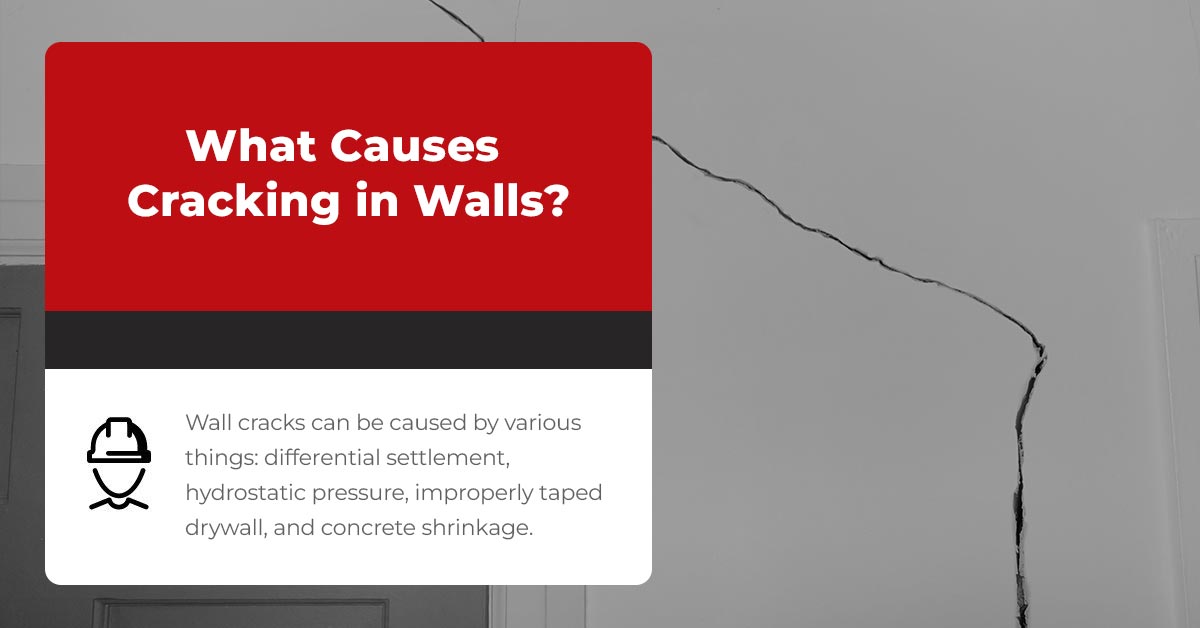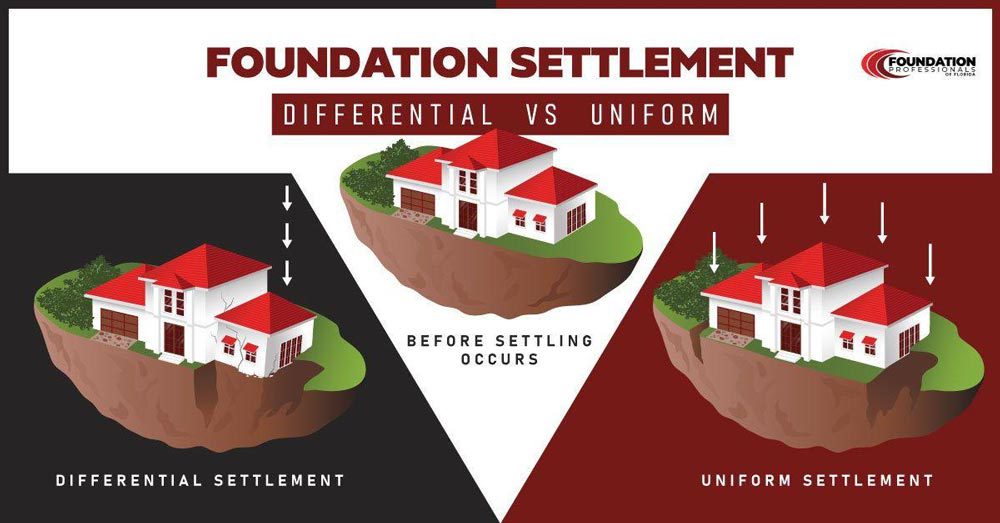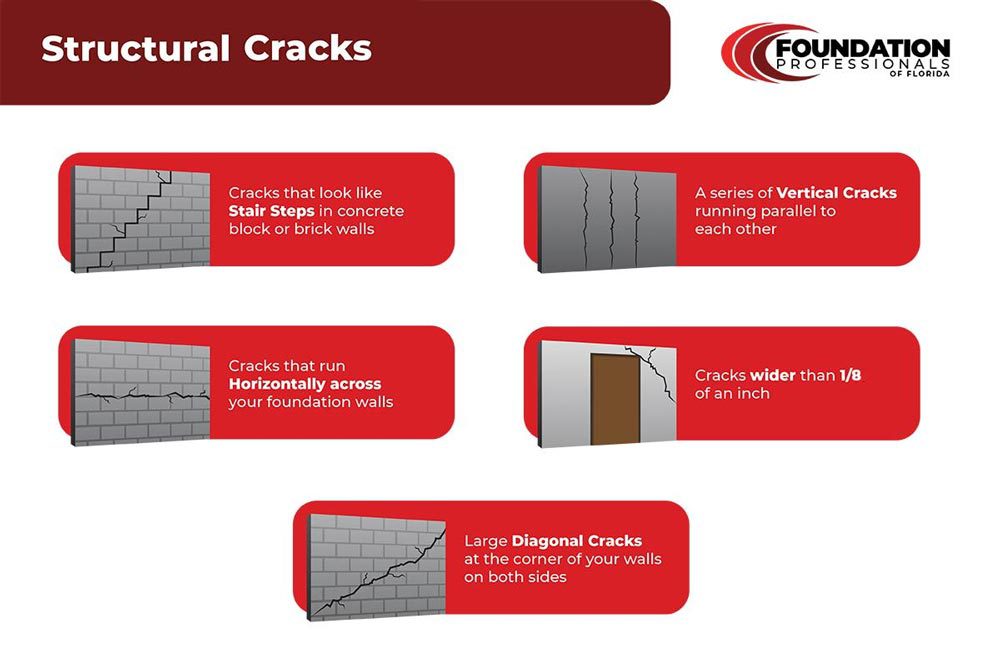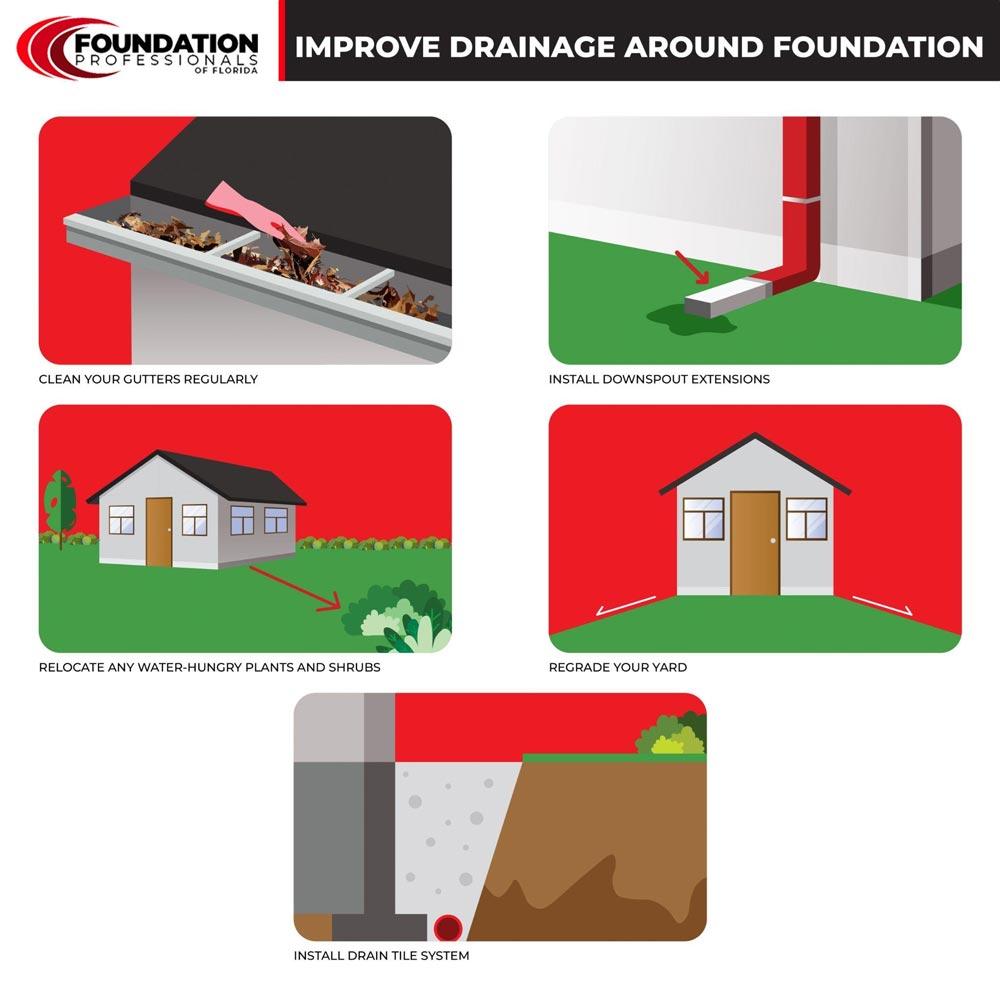Looking for information about wall cracks? The good news is that not all wall cracks are serious. Some are just ugly, caused by things like paint buildup or improperly taped drywall. Unfortunately, some wall cracks can indicate a serious foundation problem. Therefore, it’s essential to know which is which. In this blog post, we’ll explore some of the most common causes of cracking in walls, how to spot a wall crack caused by a foundation problem, repair options, and more.
Common Causes of Wall Cracks
The most common causes of wall cracks include the following:
- Uniform settlement – It’s normal for a foundation to settle into the soil slightly after construction. As long as the settlement is uniform, there’s usually nothing to worry about. While uniform settlement can cause a few small wall cracks here and there, these cracks typically don’t affect your home’s structural integrity.
- Differential settlement – Differential settlement occurs when a foundation settles into the ground unevenly. Differential settlement is typically caused by problematic soil conditions or poor construction practices. The best way to describe the difference between uniform and differential settlement is via an illustration:
- Paint and plaster buildup – Painting or plastering over the same area again and again can cause small cracks to form in the paint or plaster. These cracks aren’t structural, just unsightly.
- Plumbing leaks – Water damage can weaken drywall and cause it to deteriorate and crack.
- Vibrations from heavy machinery – Vibrations from heavy machinery can also cause walls to crack. This is particularly true in buildings and homes near construction sites or other areas where heavy machinery is being operated.
- Hydrostatic pressure – When excess moisture in the ground around the foundation can’t drain off, hydrostatic pressure can build up and push against foundation walls. Hydrostatic pressure can cause a wall to bow inward and even crack.
- Shrinkage – Shrinkage during the concrete curing process can cause poured concrete foundation walls to crack. While these cracks aren’t structurally significant, they can allow water into a crawl space or basement. Therefore, they should be sealed.
- Temperature fluctuations – A house that sits vacant for most of the year can also be prone to wall cracks because there’s rarely a climate control system operating.
- Improper drywall installation – Improperly taped drywall is a common cause of wall cracks. This usually happens when the installer doesn’t use enough drywall mud. Eventually, the drywall tape comes loose and creates a crack.
When a Wall Crack Might Indicate a Structural Problem
Signs a wall crack might be caused by a foundation issue include the following:
- Stair step cracks in brick or masonry – These cracks are a telltale sign of foundation movement and should be inspected immediately.
- A series of vertical cracks next to each other – While hairline vertical cracks in a poured concrete foundation wall are usually caused by shrinkage, a series of vertical cracks next to each other is a sign something more serious is going on.
- Horizontal cracks – Horizontal cracks in a wall generally indicate serious structural problems. If you notice any horizontal cracks, getting a professional assessment as soon as possible is essential.
- Cracks wider than ⅛ inch – These indicate the foundation has probably moved.
- Diagonal cracks from the corners of doors and windows – These cracks are another sign the foundation has moved.
If you notice any of the above signs, contact a professional foundation repair contractor and schedule an inspection. Foundation problems spotted early cost less to repair. For more information, see Common Signs Of Foundation Issues In Residential Homes.
How Are Wall Cracks Repaired?
When it comes to repairing wall cracks, the chosen repair option will depend on the root cause of the problem. Some possible repair solutions include the following:
Repairing cracks caused by differential settlement
Cracks caused by differential settlement are typically repaired via underpinning. This process involves using push, helical, or slab piers to extend the foundation down to load-bearing soil in order to stabilize it. Once the piers are in place the foundation is gently raised as much as possible without causing damage. This often closes the wall cracks.
Repairing cracks caused by hydrostatic pressure
A common repair solution for cracks caused by hydrostatic pressure is carbon fiber straps to stabilize the wall. The straps are applied and bonded to the interior surface of the wall using a high-strength epoxy resin. Once you paint over them, they’re virtually invisible.
Repairing cracks caused by improperly taped drywall
Here, the solution is much simpler. In this case, the crack can be fixed by simply retaping the drywall. This involves removing loose or damaged tape from the seams and joints and applying a new joint compound and tape. With proper sanding and finishing, the crack can be seamlessly repaired.
Choosing the right repair option requires an understanding of the underlying issues and the right expertise and tools to address them effectively. Therefore, it’s best to let the pros repair wall cracks.
How to Help Prevent Cracking in Walls
Differential settlement and hydrostatic pressure are the two most serious causes of cracks in walls. Fortunately, there are things you can do that will help prevent these two problems, most of which involve controlling groundwater around the foundation. This is because excess moisture in the soil is a leading cause of foundation trouble.
- Clean gutters regularly – Gutters clogged with leaves and debris can cause water to overflow and pool around your foundation.
- Use downspout extensions – Downspouts are designed to channel water away from your home’s foundation, but if they don’t extend far enough, water can still collect next to your foundation and cause damage. Installing downspout extensions ensures that water is carried several feet away from your foundation before release.
- Keep trees away from the foundation – Some trees have extensive root systems, and if they invade the ground under the foundation, they can cause a lot of trouble. Depending on the type of tree, it is common that roots extend as far under the ground as the leaves canopy from the trunk. It’s best to keep from planting large trees at least 50 feet away from the foundation, or consider how large an existing tree may grow if you are selecting placement for a new foundation.
- Regrade your yard, if necessary – Regrading involves making sure groundwater flows away from your foundation. This can be particularly important in areas with heavy rainfall.
- Install a drain tile system – A drain tile system is very effective at directing groundwater away from your foundation. There are two types of drain tile systems: exterior and interior.
These preventative steps are well worth the investment, as they can save you from costly repairs and ensure the long-term health of your home’s foundation.
If you’re concerned about a wall crack, contact Foundation Professionals of Florida today and schedule an evaluation. If we find a problem, we’ll give you a repair estimate.




